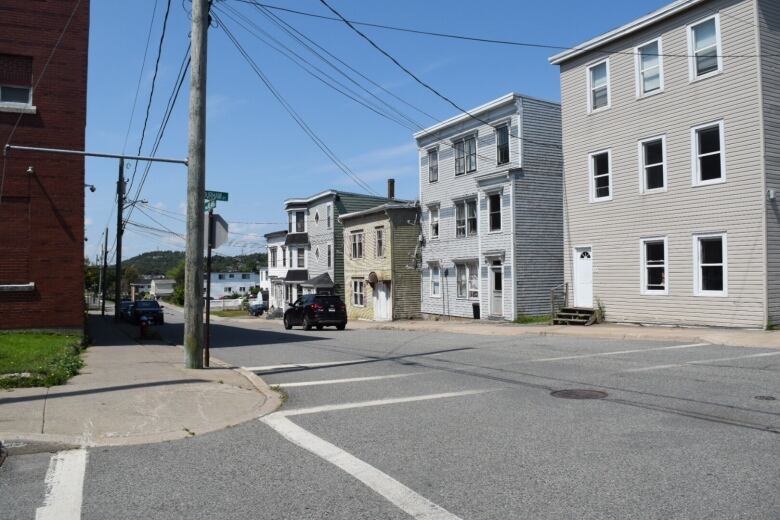80% of children from Mideast, half of kids with single parents live in poverty
New Brunswick child poverty rates elevated in ethnic communities, single-parent households, report card finds

Nearly 28,000 New Brunswick children live in poverty, according to an annual report card from the Saint John Human Development Council many of whom are children of single-parents, ethnic minorities or newcomers.
The latest report by the Human Development Council on child poverty reveals startling figures.
For one, it found about 80 per cent of children whose families came to the province from the Middle East, including Syria, fall below the poverty line. The total is about 1,220 kids.
"In terms of scale, the number is actually quite small," said NataliaHicks,a researcher and author of the 2017 New Brunswick Child Poverty Report Card.
"Not to say it isn't important, it's absolutely important, but we're talking about a manageable number of children here. And we could impact some really important change.

The information comes fromthe long-form census, which was restored in 2016. At that time a highproportion of Syrian refugees were settling in New Brunswick.
"So in the New Brunswick context, it seems clearer that systematically we have a bunch of newcomers who need support, because these newcomers arrived in poverty," Hicks toldInformation Morning Saint John.
"And the fact that numbers are so high might also be the number of refugees in proportionto our overall diversity in New Brunswick."
Single-parent households hit hard
The report card also found about half of children of single parents live in poverty.
That's compared to 10 per cent of children with two parents in the home.
The median income of a poor family that consists of one parent and onechild is $17.280, which is more than $8,000 below the poverty line of $25,498, according to the report.
"That's kind of shocking here," Hicks said.
"While it's not shocking that children in single-parent families are disproportionately poor, I think the difference between the two cohorts, that's a reality check for me."
'Right direction'
New Brunswick has the fourth highest child poverty rate of Canada's 10 provinces, remaining at just above 20 per cent.
But it is down for a second year in a row, and showing the highest reduction since 2010 a drop by almost 1,000 in that five-year period.
"It brings our rates back down to 2010 levels, so it's heading in the right direction," Hicks said.
"We obviously have a long way to go, but these indicators seem to be in the right direction, so I'm hopeful there."
Campbellton has the highest rate of child poverty in New Brunswick, at 33.9 per cent, followed closely by Saint John, with a 30 per cent rate.
Dieppe is experiencing the lowest rate at 9.8 per cent.

Elevated rates seem to be concentrated in certain neighbourhoods.
In the north and south ends of Saint John, for example, the child poverty rates for Wards 2 and 3 are41 and 48 per cent respectively.
That is double the provincial average.
"We sort of know that intrinsically in Saint John, it's street by street," said Hicks.
And the suburbs are doing much better. While Saint John is struggling with a 30 per cent child poverty rate, the neighbouring communities don't even come close.
Rothesay is seeing a child poverty rate of 11.6 per cent, Quispamsis is at eight per cent, Grand Bay-Westfield is 9.2 per cent, and Hampton 14.6 per cent.
- Saint John group gets funding to fight generational poverty
- Small deeds, big projects: tackling Saint John poverty
- Saint John group calls for federal help to deal with poverty
'Measure of inequality'
Hicks says the province still has a long way to go to end the cycle of poverty.
Many New Brunswickers struggle to meet their basic needs, with one in three people accessing a food bank being children.
"When we're talking about poverty, we're talking low-income measures, which is essentially a measure of inequality," she said.
"Inequality shapes the way we feel poor. You're not poor in isolation. If you can't keep up, you're going to feel isolated and stigmatised. So reducing inequality and levelling the playing field needs to be part of the action."
The report said policies that seek to redistribute income through taxation and improved social policy are key to ending poverty and reducing inequality.
Its findings are based on data from 2015 income measures, and the census.
Nova Scotia had thehighest poverty ratein Atlantic Canada and third highest in the country behind Manitoba and Saskatchewan.
With files from Information Morning Saint John












_(720p).jpg)


 OFFICIAL HD MUSIC VIDEO.jpg)
.jpg)



























































































